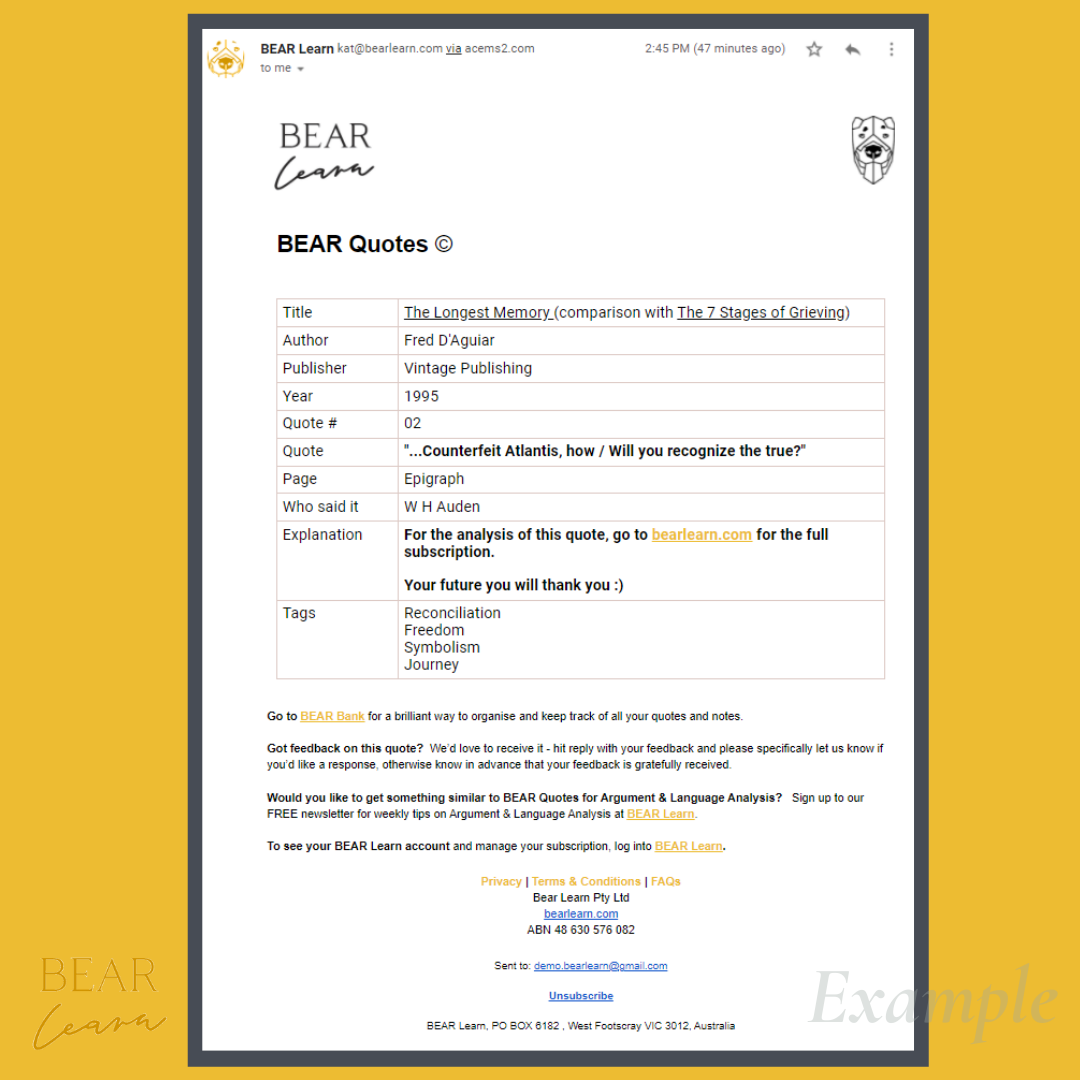My Store
Nine Days Quotes only
Nine Days Quotes only
Couldn't load pickup availability
| 🥳👏 Smart move! The VCE English Exam and your school SAC (School Assessed Coursework) require you to have and explain key quotes from your text. Lucky you've got BEAR Quotes Daily Analysis in your study kit 🚀 |
👀📺 WATCH some of our short quote explanations on YouTube here.
What you're getting
BEAR Quotes (Quotes only) for Nine Days (Toni Jordan, published by Text Publishing, 2012)
One (1) quote* will be sent to your email address daily for at least fifty (50) consecutive days.
*On some days, the ‘quote’ may refer to a form of metalanguage. This means that in addition to literal quotes from the text, this metalanguage or film technique is important to include in essay writing.
Unlock detailed analysis for each quote by purchasing the full BEAR Quotes here. BEAR Quotes Daily Analysis is much more than the ordinary study guide.
🙋 WANT the Quotes ALL AT ONCE in a digital repository? Add this to your cart!
Text summary from the 2020 VCAA Text List
Nine Days is the third and most accomplished novel by Melbourne writer Toni Jordan. It won the Independent Booksellers of Australia Award for Best Fiction in 2013 and was shortlisted for a number of other awards. The front cover of Nine Days hosts an archival picture from The Argus newspaper of a troop train leaving a Melbourne railway station during the Second World War. The picture shows a soldier leaning out of a window for a goodbye kiss from a young woman on the platform, who sits aloft a stranger’s shoulders. A momentous occasion for the central figures is depicted.
Nine Days timeshifts between the eve of the war in 1939 to the early 21st century. The approach Jordan takes to presenting multiple perspectives over time is a non-linear one, held together by the linking of key themes and motifs across chapters. Each of the nine central characters has a day devoted to them, in which pivotal events take place, presented through their eyes and in their voice. Most of the action revolves around three generations of the Westaway family household in the predominantly Catholic, working-class suburb of Richmond. ‘Our part of Richmond, here on the hill, is an island. I can see over the roofs of the rest of it, mismatched shingle and rusty tin held down by lumps of rock and brick and jerry cans.’
The realities of life for the Westaways include events such as young, unmarried Connie’s unwanted pregnancy, which leads to a ‘backyard’ termination that ends tragically. Her younger brother Kip has the direction of his life changed by the death of his father, forcing him to leave school and take up work to support his family. There are chapters told from the viewpoint of Kip’s daughters, Stanzi and Charlotte, some 70 years later. These chapters express the kinds of modern sentiments and concerns that are likely to be relatable for today’s readers.
Share










